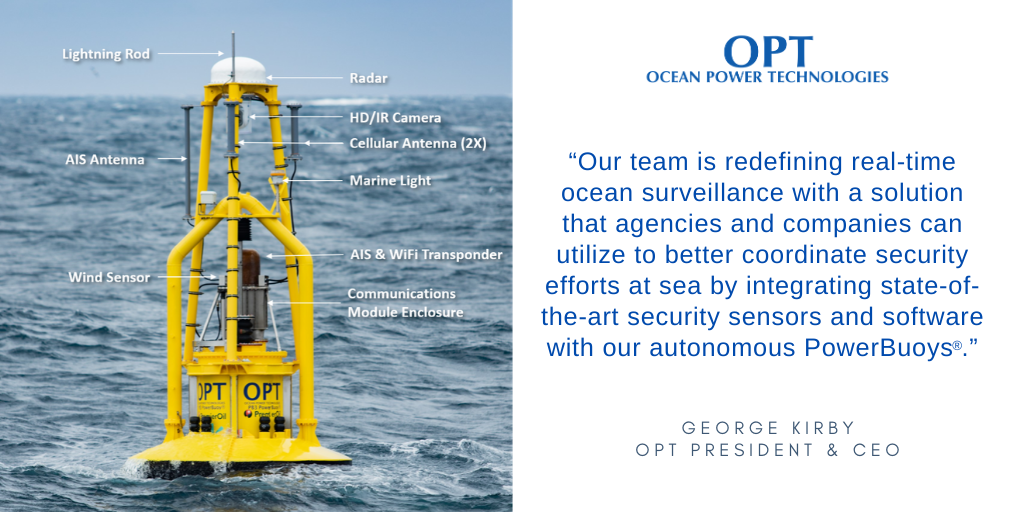OPT Unveils Autonomous Surface Surveillance Solution for Offshore Territorial Applications

Introducing the OPT PowerBuoy® Surface Surveillance Solution, suitable for security monitoring of offshore areas.
“Our team is redefining real-time ocean surveillance with a solution that agencies and companies can utilize to better coordinate security efforts at sea by integrating state-of-the-art security sensors and software with our autonomous PowerBuoys®,” said George H. Kirby, President and Chief Executive Officer of OPT. “We believe we are introducing a transformative solution that is scalable from a single unit for protecting and monitoring isolated marine assets, to multiple integrated units for governments seeking to secure extensive territorial waters.”
A single OPT Surface Surveillance Solution can monitor more than 1600 square miles of ocean surface on a permanent or temporary basis, with the ability to seamlessly link multiple surveillance assets together over large ocean areas giving end-users visibility into potentially damaging environmental or illegal activities. Customized solutions are also available including the addition of subsea sensors to monitor for acoustic signatures, tsunami activity, and water quality.
[Post continues after video]
OPT’s Surface Surveillance Solution payload consists of a high definition radar, gyro-stabilized high definition optical and thermal imaging cameras, vessel automatic identification system (AIS) detection, and integrated command and control software, paired with OPT’s autonomous PB3 PowerBuoy® or hybrid PowerBuoy® as a power and communications platform. Capabilities include 24/7 vessel tracking – including “black ships” which do not broadcast an AIS signal – automatic radar plotting and vessel warnings, and high definition optical and thermal video surveillance which can be used as evidence to aid in prosecution.
Data from the OPT Surface Surveillance Solution is transmitted to shore-based command stations via WiFi, cellular, mesh, and/or satellite systems, depending upon location. Surveillance data easily integrates with readily available marine monitoring software to provide command and control capabilities of a multi-buoy surveillance network. The data can also be integrated with satellite, and terrestrial data feeds to form a detailed surface and subsea picture of a monitored area.